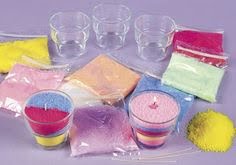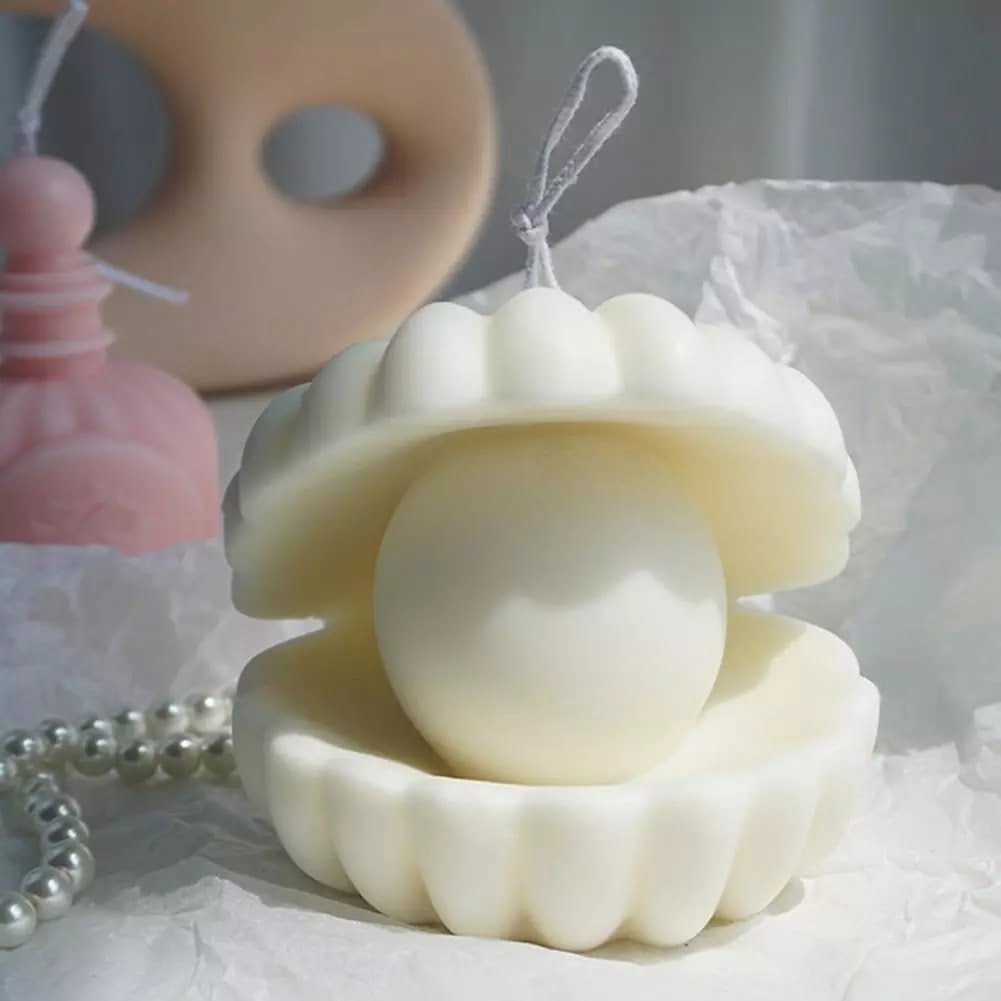Welcome to the Art of Candle Making Activity. If you’ve ever found yourself captivated by the soft flickering glow of a candle or enchanted by its sweet fragrance wafting through the air, then this article is for you.
Candle making is a timeless craft that allows individuals to create their own unique and personalized candles, perfect for adding warmth and ambiance to any space. Whether you’re seeking a creative outlet, a therapeutic experience, or even a potential profit-making venture, candle making offers endless possibilities.
Candle making has been an integral part of human history for centuries, with its origins dating back to ancient times. In this article, we will take you on a journey through time, exploring the history and origins of candle making – from its humble beginnings using animal fats and reeds as wicks to the more modern techniques and materials used today. Understanding the rich history behind this art form adds depth and appreciation to the experience of creating your own candles.
To embark on your candle making adventure, it’s important to familiarize yourself with the materials and tools needed. From wax types and fragrance oils to wicks and molds, there are various components that contribute to the end result of a beautifully crafted candle. In this section, we will guide you through everything you need to know about getting started in candle making – from selecting the right materials to ensuring safety precautions are in place.
So whether you’ve always had a passion for candles or are simply looking for a new hobby that sparks your creativity, join us as we delve into the enchanting world of candle making. This activity not only allows you to ignite your imagination but also brings warmth, relaxation, and joy into your life.
Get ready to explore different types of candles, learn various techniques, and uncover expert tips and tricks that will elevate your candle-making skills to newfound heights. Let’s dive into this captivating craft together.
History and Origins of Candle Making
Candle making is an ancient craft that has been practiced for centuries. The history and origins of candle making take us on a journey through time, showcasing the evolution of this art form and its significance in various civilizations.
1. Ancient Origins: Candle making can be traced back to ancient times, with evidence of early candles found in caves in France, dating back to 5000 BC. These early candles were made from animal fats and plant materials, such as tallow and beeswax. They served as a vital source of light for people before the invention of electricity.
2. Medieval Period: During the medieval period, candle making became more refined and developed as an important trade. In Europe, candles were primarily made from beeswax, which was considered a luxury item due to its high cost. Beeswax candles were used by the upper class and religious institutions for their bright flame and pleasant fragrance.
3. Industrial Revolution: The industrial revolution brought significant advancements in candle making techniques and materials. With the discovery of paraffin wax, a byproduct of petroleum refining, candles became more affordable and accessible to the masses. Paraffin wax candles replaced traditional beeswax candles due to their lower cost production.
4. Modern Innovations: In recent years, candle making has seen a resurgence in popularity as a result of advancements in technology and the growing interest in handmade crafts. There are now endless possibilities when it comes to candle making, with various types of wax (such as soy wax or coconut wax), fragrances, colors, and decorative elements available on the market.
As we delve into the history and origins of candle making, we gain a deeper appreciation for this timeless craft that has evolved alongside human civilization throughout time. Whether you’re a beginner or an experienced crafter, exploring the roots of candle making can provide inspiration and insights into how this art form continues to captivate people’s imagination today.
Materials and Tools Needed for Candle Making
When it comes to candle making, having the right materials and tools is essential for a successful and enjoyable crafting experience. Whether you are a beginner or an experienced candle maker, here is a list of the basic items you will need to get started:
- Wax: This is the main ingredient for your candles, and there are various types to choose from including paraffin wax, soy wax, beeswax, and gel wax. Each type has its own unique qualities and characteristics.
- Wicks: These are used to provide fuel for the flame and can be made of cotton or other natural fibers. The size of the wick will depend on the diameter of your candle.
- Containers: If you prefer container candles, you will need heat-safe containers such as mason jars or glass tumblers. These containers should be able to withstand high temperatures without cracking or breaking.
- Fragrance oils: Adding fragrance to your candles can enhance the ambiance and create a pleasant scent in any room. There is a wide variety of fragrance oils available, from floral aromas to fruity scents.
- Colorants: If you want to add color to your candles, you will need candle dye or color blocks specifically designed for candle making. These can be mixed together to create custom colors.
- Candle molds: For those wanting to make pillar or novelty-shaped candles, molds are necessary. They come in different shapes and sizes and can be made from silicone, metal, or plastic.
In addition to these materials, there are several tools that will make your candle making process easier:
- Pouring pitcher: A pouring pitcher with a spout makes it easy to melt your wax and pour it into your containers or molds without making a mess.
- Thermometer: This is used to monitor the temperature of the wax, as different types of wax require specific melting and pouring temperatures.
- Double boiler or melting pot: A double boiler or melting pot is used to melt the wax. It ensures even heating and prevents direct contact between the wax and heat source.
- Stirring utensils: Wooden spoons or silicone spatulas are commonly used for stirring the wax and mixing in fragrance oils or colorants.
- Heat source: Whether it’s a stove, hot plate, or microwave, you will need a heat source to melt your wax. Just remember to exercise caution and follow safety guidelines when working with heat.
- Scissors and wick holders: Scissors are necessary for cutting wicks to the desired length, while wick holders keep the wick centered in the container during the pouring process.
By having these materials and tools on hand, you will be well-equipped to embark on your candle making journey. Remember to always work in a well-ventilated area, follow safety precautions, and have fun experimenting with different combinations of fragrances, colors, and techniques.
Step-by-Step Guide to Candle Making Activity
Candle making is a creative and fulfilling activity that allows you to express your artistic side while producing beautiful and functional pieces. In this step-by-step guide, we will walk you through the process of making candles, from choosing the right materials to adding personalized touches.
1. Choose your wax: The first step in candle making is selecting the type of wax you want to use. There are several options available, including soy wax, beeswax, and paraffin wax. Consider factors such as burn time, scent retention, and overall aesthetic when making your decision.
2. Select your wick: The wick is an essential component of any candle as it determines how evenly and efficiently it burns. Choose a wick that matches the size and diameter of your container or mold. Additionally, consider whether you want a single wick or multiple ones for larger candles.
3. Decide on fragrance: Adding fragrance to your candles can enhance the sensory experience. Whether you prefer floral scents or cozy vanilla notes, there are countless options available in the form of essential oils or fragrance oils. Be sure to choose high-quality scents that are safe for candle-making purposes.
4. Melt the wax: Once you have gathered all your materials, it’s time to melt the wax. Use a double boiler or a specialized melting pot designed for candle making. Gently heat the wax until it reaches its recommended melting point (varies depending on the type of wax).
5. Add color and fragrance: If desired, this is when you would add color and fragrance to your melted wax. For color, use specially formulated candle dyes or color blocks that dissolve easily in the melted wax without affecting its quality. For fragrance, carefully measure and add your chosen scent according to manufacturer guidelines.
6. Pour into containers: Prepare your containers by placing wicks in them securely. Slowly pour the melted wax into the containers, being careful not to disturb the wicks. Leave some space at the top to allow for proper burning and expansion.
7. Cure and trim: Allow your candles to cool and cure for at least 24 hours before trimming the wicks. Trim them to a quarter of an inch for optimal burning and prevent excessive smoke or flickering.
Now that you have followed this step-by-step guide, you are ready to enjoy the fruits of your labor – a beautifully crafted candle that ignites both light and creativity. Remember, candle making is a skill that improves with practice, so don’t be discouraged if your first few attempts aren’t perfect. Experiment with different techniques, colors, fragrances, and molds to create unique candles that reflect your personal style.
Different Types of Candles
Candles come in various shapes, sizes, and scents, offering endless possibilities for creativity and personalization. In this section, we will explore the different types of candles that you can make during your candle making activity.
One popular type of candle is the container candle. This type of candle is made by pouring melted wax into a container such as a glass jar or tin. It is convenient because it doesn’t require a separate holder or stand, making it easy to transport and display in any room. Container candles can be scented or unscented, depending on your preference, and can be customized with different colors, designs, and embellishments.
Another type of candle is the pillar candle. Pillar candles are solid and do not require a container for support. They come in various heights and diameters, allowing for creative combinations when placed together in groups or arrangements. Pillar candles are versatile and can be used both indoors and outdoors, making them an excellent choice for decoration during special events or everyday use.
Taper candles are long, slender candles that are traditionally used for formal occasions such as dinners or ceremonies. They usually have a pointed end that tapers towards the base and require a candle holder or candelabra for support. Taper candles add elegance to any setting and come in various colors to suit different themes or décor styles.
In addition to these common types of candles, there are novelty candles that come in unique shapes such as animals, objects, or even food items like cupcakes or fruit slices. These candles are perfect for themed parties or as fun gifts for friends and loved ones.
| Type of Candle | Description |
|---|---|
| Container Candle | Made by pouring melted wax into a container such as a glass jar or tin. Can be scented or unscented. |
| Pillar Candle | Solid candles that do not require a container for support. Available in various sizes and can be used both indoors and outdoors. |
| Taper Candle | Long, slender candles traditionally used for formal occasions. Requires a candle holder or candelabra for support. |
| Novelty Candle | Candles in unique shapes such as animals, objects, or food items. Perfect for themed parties or as fun gifts. |
Candle Making Techniques
Candle making techniques can vary greatly, from basic methods that anyone can try to more advanced techniques that require specialized tools and skills. Whether you’re a beginner or an experienced candle maker, learning new techniques can add variety and uniqueness to your creations. In this section, we will explore some of the most popular candle making techniques and how you can master them.
Dipping Method
One of the most basic and traditional candle making techniques is the dipping method. This technique involves repeatedly dipping a wick into melted wax until desired thickness and shape are achieved. The key to successful dipping is maintaining a consistent temperature of the wax and controlling the time for each dip to ensure uniformity.
Container Candle Making
Container candles are made by pouring melted wax into containers such as jars or tins, which act as both the mold and vessel for burning the candle. This technique allows for creative customization by adding various colors, scents, or decorative elements like dried flowers or shells. It’s important to choose containers with heat-resistant properties to ensure safe burning.
Pillar Candle Making
Pillar candles are freestanding candles made without a container. This technique requires molds that come in different shapes and sizes. One way to make pillar candles is by using a mold and pouring hot wax directly into it. Another method is called “hand-poured,” where softened wax is shaped by hand or with special tools before it solidifies.
Gel Candle Making
Gel candles have gained popularity due to their transparent appearance and ability to hold decorative objects suspended within the gel. This unique technique involves heating a special gel wax until it becomes clear and viscous, then adding colorants, fragrance oils, and embeds like seashells or marbles before pouring them into containers.
Marbling Technique
The marbling technique adds a beautiful visual effect to candles. It involves mixing different colored wax together in a controlled manner, creating a swirling pattern reminiscent of marbled stone. This technique can be achieved by carefully pouring melted wax of various colors in layers or by using specialized techniques like dip-pulling or skewering.
By exploring and mastering these candle making techniques, you can create candles that are not only functional but also works of art. Whether you prefer the simplicity of dipping or the creativity of marbling, there is a technique out there that will ignite your imagination and take your candle making skills to the next level. So grab your materials and tools, and let’s get started on this exciting journey.
Safety Measures
Candle making can be a fun and rewarding activity, but it is important to prioritize safety to ensure a hassle-free experience. Here are some key safety measures to keep in mind when engaging in candle making:
- Work in a Well-Ventilated Area: It is crucial to work in a well-ventilated area when making candles. The process involves melting wax, which can release fumes that may be harmful if inhaled in large quantities. By keeping the area properly ventilated, you can minimize the risk of experiencing any health issues.
- Use Appropriate Safety Equipment: To protect yourself from any potential hazards, make sure to wear proper safety equipment such as gloves and goggles. Gloves will help protect your hands from hot wax and possible burns, while goggles can prevent any accidental splashes or spills from getting into your eyes.
- Keep Flammable Materials Away: When working with open flames for candle making, it is essential to keep flammable materials away from your workspace. Be mindful of loose fabric, paper, or other objects that could easily catch fire. Make sure the surrounding area is clear of any potential hazards before starting the candle making process.
- Never Leave Candles Unattended: Whether you are working with an open flame during the melting process or enjoying the finished product, it is crucial never to leave candles unattended. Accidents can happen quickly, and it’s important to monitor your candles at all times to prevent fires or injuries.
- Keep a Fire Extinguisher Nearby: As an additional precautionary measure, always have a fire extinguisher within reach when working with candles. In case of emergencies, having quick access to a fire extinguisher can help prevent accidents from escalating into serious situations.
By following these safety measures, you can ensure a hassle-free candle making experience while minimizing risks and maximizing enjoyment. Remember that safety should always come first when engaging in any creative activity like candle making.
Candle Making Tips and Tricks
Choosing the Right Wax
One of the most important tips for successful candle making is selecting the right wax. There are various types of wax available, including paraffin wax, soy wax, beeswax, and gel wax. Each type has its own unique qualities and melting points, so it’s essential to choose the one that suits your needs best.
Paraffin wax is a popular choice for beginners due to its affordability and ease of use. Soy wax is a natural and eco-friendly option, while beeswax offers a natural sweet scent and longer burn time. Gel wax allows for creative designs and translucent candles.
Adding Fragrance
Adding fragrance to your candles can elevate the sensory experience and make them more enticing. When choosing fragrance oils or essential oils for your candles, opt for high-quality ones specifically formulated for candle making.
It’s important to follow recommended fragrance load guidelines to ensure optimal scent throw without overwhelming the candle or causing performance issues. As a general rule of thumb, 1 ounce of fragrance oil per pound of wax is a good starting point, but this may vary depending on personal preference and the specific fragrance oil used.
Using Dyes and Colors
Colors play a significant role in candle making as they enhance their appearance and create aesthetic appeal. To add color to your candles, you can use either liquid dyes specifically formulated for candles or dye chips/powders made from concentrated colorants. Start with small amounts of dye as they are highly concentrated, gradually adding more until you achieve your desired shade. Remember to stir well to evenly distribute the color throughout the melted wax.
Creating Unique Designs
Creating unique designs can take your homemade candles to another level. Here are a couple of techniques you can try:
– Embedding: Embedding involves placing small decorative objects, such as dried flowers or shells, inside the candle. Simply arrange the objects in the desired design in a candle container and pour the melted wax over them.
– Layering: Layering allows you to create candles with multiple colored layers. Start by pouring a thin layer of melted wax into the container and allowing it to cool and harden before adding the next layer. Repeat this process until you’ve achieved all your desired layers.
By experimenting with different techniques and designs, you can unleash your creativity and create truly unique candles that will impress friends and family.
Candle Making as a Therapeutic and Relaxation Activity
Candle making is not only a creative and enjoyable hobby but also a therapeutic and relaxation activity. The process of making candles allows individuals to engage in a calming and meditative practice that promotes mindfulness and self-care. The act of melting wax, adding fragrance oils, and pouring the mixture into molds can be incredibly soothing and comforting after a long day.
One of the reasons why candle making is considered therapeutic is its ability to reduce stress and anxiety. The scent of certain essential oils, such as lavender or chamomile, can have calming effects on the mind and body. As the candles burn, the aroma fills the space, creating a peaceful atmosphere that encourages relaxation. Many people find that lighting a scented candle at the end of a hectic day helps them unwind and release tension.
Furthermore, candle making can also serve as a form of self-expression. From choosing different colors and scents to experimenting with various shapes and designs, individuals have the freedom to create candles that reflect their personal style and preferences. This creative outlet allows individuals to focus their energy on something positive and constructive, which can boost their mood and increase overall well-being.
Candle Making as a Hobby
In conclusion, candle making can be much more than just a hobby – it has the potential to be a profitable venture. As we have explored in this article, the art of candle making is not only a creative and therapeutic activity, but it also offers endless possibilities for those with an entrepreneurial spirit.
By mastering different techniques and experimenting with various types of candles, individuals can develop their own unique brand and style. Whether it’s hand-poured soy wax candles or intricately designed scented pillars, there is a market for all kinds of candles. With the right marketing techniques and an eye for quality, candle makers can turn their passion into profit.
Furthermore, the demand for handmade and artisanal products has been steadily increasing in recent years. People are becoming more conscious about supporting local businesses and buying from small-scale producers. This presents a great opportunity for candle makers to carve out their niche in the market and attract customers who appreciate the craftsmanship that goes into each candle.
In addition to turning a profit, candle making as a hobby also offers many personal benefits. It provides an avenue for self-expression and creativity, allowing individuals to explore their artistic side while experiencing the therapeutic benefits of working with fragrances and colors. The process itself can be relaxing and fulfilling, creating a sense of satisfaction when witnessing the final product.
In conclusion, candle making is not just about creating beautiful candles – it is about turning passion into profit. By taking advantage of the growing market for handmade products and utilizing various marketing strategies, candle makers can build successful businesses while doing something they love. So why not take that first step? Unleash your creativity, master different techniques, and start on your journey towards transforming your hobby into a profitable venture.

Welcome to my candle making blog! In this blog, I will be sharing my tips and tricks for making candles. I will also be sharing some of my favorite recipes.





